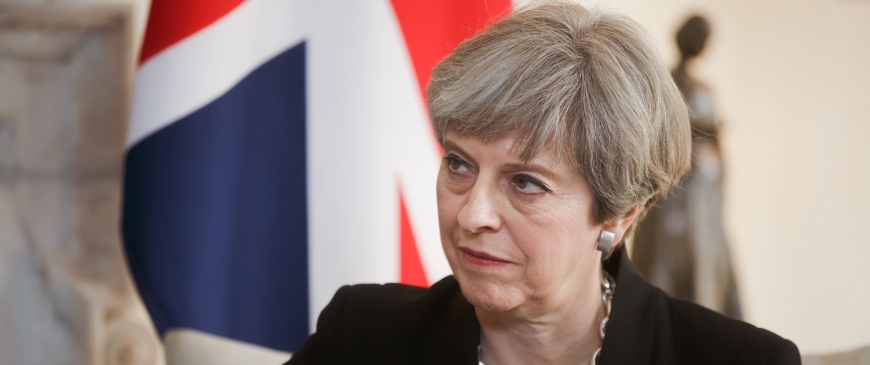
Theresa May's moment to soften her Brexit stance
Twenty months after the Brexit referendum, the British government is inching towards working out what to ask for in its future relationship with the EU. So far, Theresa May, the prime minister, has prioritised maintaining the uneasy truce between the factions in the Conservative party and indeed the cabinet.
But the time has arrived for her to adapt her position to one that is more likely to result in a deal acceptable to the EU and the UK. This means Mrs May will have to soften her “red lines”.
Meeting at Chequers this week, Mrs May and her ministers agreed that they wanted a bespoke trade deal, based on the principle of managed regulatory divergence. In many areas, including much manufacturing, the UK would start off aligned with EU rules but would have the right to diverge. In other areas, such as some services, there would be mutual recognition or no alignment at all.
It seems ingenious. But a problem arises: the EU will reject these ideas. Frustrated with the prevarication in London, any clarity that emerges from the speech that Mrs May is due to give next week will be welcomed. But both the 27 other member states and the European Commission see the single market as an integrated whole. The UK has consistently been warned that “cherry picking” the EU rules that suit it, while rejecting other parts, will not be allowed. Concerns remain that any arbitration mechanism envisaged by the British will be too weak to prevent undercutting EU standards.
Furthermore, member states know that their priorities and interests differ. They worry about their ability to agree on the areas where the UK should be aligned. While all say they do not wish to punish the UK, some EU leaders fear that a bespoke model leaving the British half inside the single market would enable the UK to thrive — and so encourage other members to think of quitting.
Michel Barnier, the commission’s chief negotiator, has long argued that Mrs May’s red lines leave only one viable model for the future relationship. If Britain rejects free movement, budgetary payments, the European Court of Justice (ECJ), EU rules and the customs union, it has to accept something like the EU-Canada free trade agreement. That would provide tariff-free trade in goods but only limited access to European markets for UK services.
A majority of the member states, including Germany and France, support Mr Barnier’s plan. But several are concerned that this limited deal could restrict trade with the UK too much. Britain sees Sweden, Belgium, Cyprus, the Czech Republic, Denmark, Hungary, Ireland, Italy, Luxembourg, Malta, the Netherlands, Poland, Portugal and Slovakia as potential “friends”, and hopes they will soften the commission’s approach.
However, none of them likes the UK’s ideas on regulatory divergence. They want a softer approach for different reasons and in different ways and the group lacks a natural leader. The UK will find it hard to shift the line set by France, Germany, the commission and the European Parliament.
Mrs May could aspire to “Canada plus” — more provisions on services and some industrial sectors ending up close to the single market. It would help if she acknowledged that painful trade-offs cannot be avoided, offered assurances that the UK would not undercut EU standards, and accepted stringent penalties if Britain moved out of alignment. Most important of all (and this is the politically difficult decision) she would need to soften her red lines.
The EU cares most about the UK accepting its rules and the authority of the ECJ. In asking for manufacturing to be closely aligned with EU rules, the UK has perhaps implicitly softened those two lines. Mrs May should also soften two other red lines. If she chooses modest restrictions on immigration from the EU, and gives preferential access to its citizens, she will earn much goodwill. She could gain even more by dangling contributions to future EU budgets. The EU has not asked for cash but may do so when it ponders how to fill the annual €12bn hole in its budget left by Brexit.
One red line that Mrs May seems determined to retain — despite pressure from businesses — is the decision to leave the customs union. If she asked for a customs union with the EU it would constrain the UK’s ability to strike free trade deals with other countries, alienating the Conservative right. But the opposition Labour party is moving towards a policy of a UK-EU customs union and could join Tory Remainer rebels in parliament to force Mrs May’s hand.
The EU would welcome a British decision to ask for a customs union — which would reduce trade friction between the EU and the UK, and help to eliminate a hard border for Northern Ireland. Brussels could be open to offering the UK a better deal than Turkey has in its customs union with the EU. But these terms — the best the UK can hope for — will only be attainable if Mrs May starts to move.
The writer is director of the Centre for European Reform.
